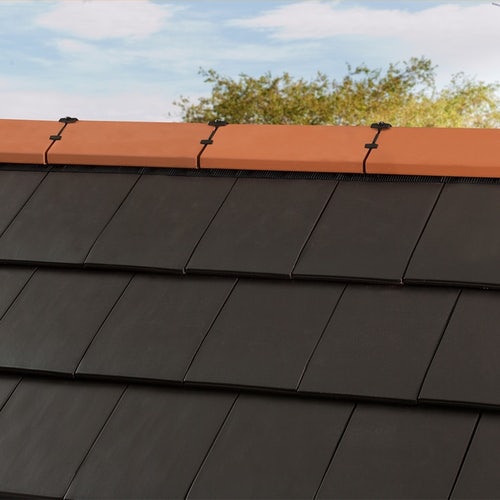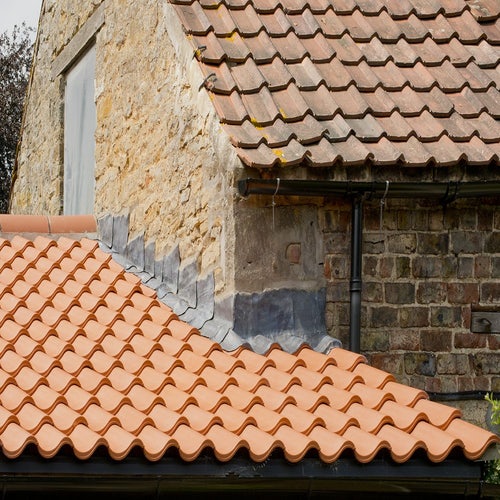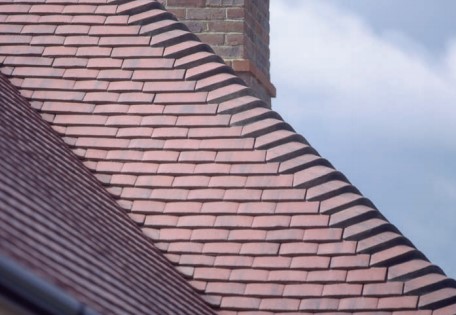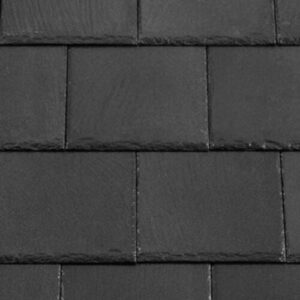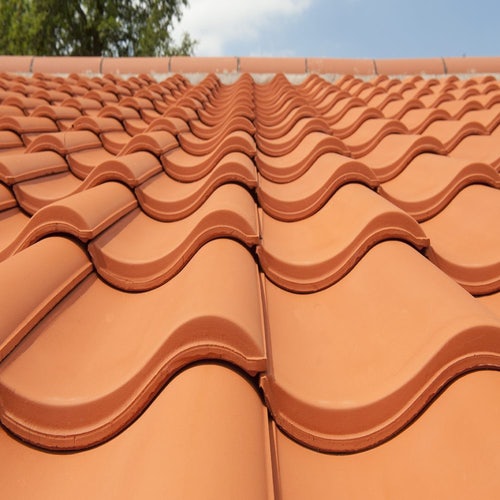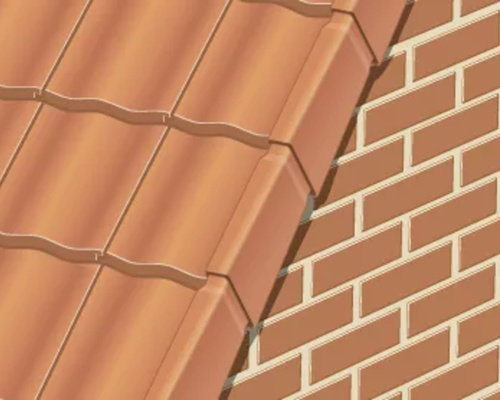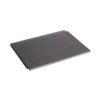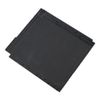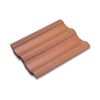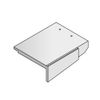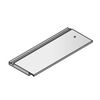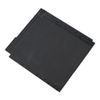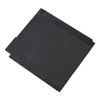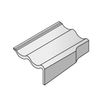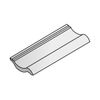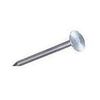Interlocking roof tiles have become a popular style over the years. What makes them so special and what interlocking roof tiles should you buy?
Table of contents:
- What are interlocking roof tiles
- What are the benefits of interlocking roof tiles vs plain tiles
- Which types of materials are interlocking roof tiles available in
- Which roof pitches are interlocking styles suitable for?
- How to lay interlocking roof tiles
What are interlocking roof tiles?
Interlocking roof tiles overlap and interlock at their sides, enabling them to be laid single lap. A wide variety of roof tiles are available in this style, including clay pantiles, Roman tiles and the increasingly popular concrete tiles.
There are many benefits to choosing interlocking tiles; they’re inexpensive to install, quick to lay and offer a lightweight yet versatile roof covering.
What are the benefits of interlocking roof tiles vs plain tiles?
Deciding on whether to opt for interlocking or plain tiles depends on the desired finish and available budget. However, there are many advantages of installing interlocking tiles over their plain counterparts. As interlocking tiles fit together securely only a single lap is required, while plain tiles must be laid double-lapped to ensure weather tightness.
There are often more savings to be made by choosing interlocking tiles too. This type of tile is usually larger than a plain tile, so fewer will be required to cover the roof. The installation process will therefore be quicker and more cost-effective than that of laying a plain-tile roof.
Which types of materials are interlocking roof tiles available in?
There’s an abundance of choice when it comes to interlocking roof tiles, so whether your property is modern or traditional you’ll find a tile to suit its appearance. Interlocking tiles can also mimic the look of plain tiles and alternative roofing materials.
Clay interlocking tiles
One of the most traditional materials in the industry, tiles have been crafted from clay for thousands of years. The end result is quite striking, which is extremely appealing for a range of different properties. Clay itself is a flexible material, yet its durability is one of the main reasons it’s used to create tiles and accounts for its lengthy lifespan of around 30 years.
If you’re looking for an interlocking tile that gives the illusion of a plain-tiled roof, our Redland Fontenelle is a great option. This interlocking clay roof tile comes in a striking brindle colour, yet gives the appearance of a plain-tiled roof when installation is complete.
Concrete interlocking tiles
Concrete tiles tend to be a budget-friendly option when it comes to roof coverings. Although they weigh more than slate or clay, they still benefit from a long lifespan of around 30 years, and are a good option for new builds and roofs that need re-tiling.
Concrete tiles can also emulate the look of more expensive materials, so you needn’t compromise on the finish. Our Marley Modern Interlocking Concrete Roof Tile has a smooth, slate-like appearance, but is a more affordable solution than using traditional slate.
You can find out more information about the benefits of installing concrete tiles in our concrete roof tile guide.
Cambrian Slate interlocking tiles
One of the most eco-friendly roofing solutions, Cambrian Slate comes from Wales and is made up of over 60% recycled Welsh slate. This lightweight roof tile is suitable for even the most exposed sites, and scores highly in both looks and performance. It’s flexible too, having covered roofs with pitches as low as 15°.
Redland Cambrian Slate comes in a choice of three colours, alongside a pre-weathered option. The latter option is perfect for replacing missing tiles, or re-tiling the roof of an old property, where maintaining character is of paramount importance.
Which roof pitches are interlocking tiles suitable for?
Interlocking roof tiles are suitable for a variety of roof pitches. The type of material you’ll be able to use will depend on the pitch you’re working with. Concrete tiles are extremely versatile and can typically be used on lower pitch roofs. For example, the Marley Mendip 12.5 is a concrete interlocking roof tile that can be used on a pitch of just 12.5°, making it the perfect solution for one-storey extensions and refurbishment projects.
Meanwhile, clay tiles are well suited to high-pitch roofs. The Marley Melodie Single is a particularly versatile interlocking pantile. Like the Marley Mendip, it can be used on pitches as low as 12.5°, but has the added benefit of being suitable for a maximum pitch of 70°.
How to lay interlocking roof tiles
Interlocking roof tiles are some of the simplest tiles to install, making them the perfect candidate for a DIY project. Below you’ll find an overview of the steps required to install interlocking tiles yourself.
1. Positioning the battens
We recommend following the guidance of the supplier regarding the spacing needed between battens. This measurement is known as the ‘gauge’ and can vary with roof pitch. The supplier’s gauge will be the minimum required.
2. Laying interlocking tiles
Start at the eaves and work right to left by hooking the nibs over the wooden battens before laying the next tile alongside it. Make sure it overlaps its neighbour, with the nibs hooked on the batten. As these are interlocking tiles, each row goes directly above the other with no need to stagger as the joints are automatically sealed by overlaps.
3. Cutting and fixing
We recommend using a disc cutter for cutting concrete tiles and the use of aluminium nails as opposed to galvanised ones. While it’s not necessary to nail every tile, all those along eaves, up verges and along ridges should be nailed. As a guide, one nail every fifth tile horizontally and every third tile up the roof is a good rule to work with.
4. Verges and ridges
Tiles should be neatened on the verges, but you can also buy verge tiles or verge covers to cover the join and ensure weather tightness. If ordinary tiles are used on verges, these should be bedded into cement mortar or secured in place with clips before nailing.
Ridges and hips are finished with ridge tiles, which usually match the roofing tiles. The area where ridges meet the tiles should be trimmed so that the ends of the ridge tiles are parallel when installed. Ridge tiles are typically bedded on and jointed with cement mortar, which can be modified with colour pigment to match the ridge tiles.
